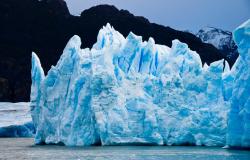
Targeted geoengineering aims to tackle a global scale impact of climate warming by addressing local or regional systemic interventions. We consider three examples: conserving the West Antarctic ice sheet by limiting rates of ice discharge or increasing snow accumulation, thereby reducing global sea level rise; transforming the Arctic permafrost zone into steppe grassland; raising the albedo of Arctic sea ice. There are important differences between targeted interventions and archetypal solar geoengineering, which ideally would have global governance structures, while some targeted interventions may be done entirely under the accepted purview of small numbers of nation states. For example, the West Antarctic ice sheet is governed by the consultative members of the Antarctic Treaty. Of the interventions we look at, only ice sheet conservation seems viable and efficient relative to solar geoengineering. Many important treaties and conventions rely on the precautionary approach. While at first glance this principle seems to argue against targeted interventions, we argue that it may in fact do the opposite. Given the existence of irreversible thresholds in many natural systems, the precautionary approach may be better upheld by a targeted intervention that prevents a system from changing in ways that cannot be undone.
Policy Implications
- Doing solar geoengineering would ideally need at least near‐global consensus, while targeted approaches require only a subset of states to agree on them. For example, Russian and Canadian policies could change the carbon released from thawing permafrost. Similarly, Greenland’s ice sheet would be the primary responsibility of the Greenlanders. For the Antarctic ice sheet, the 29 Consultative Parties to the Antarctic Treaty would determine if such work was consistent with the agreements, especially the Madrid Protocol.
- Targeted geoengineering is done on regional scales but aims to conserve the various parts of the global climate and earth system. Hence, as with solar geoengineering, it is a proactive measure. Many international treaties aim to preserve the status quo, prohibiting certain activities, and encourage conservation.
- Targeted geoengineering involves various amounts of civil engineering that could create damage locally. Environmental impact assessments are demanded by 'The Greenland Home Rule for Greenland' and the Madrid Protocol in Antarctica. In the case of Arctic sea ice, all states have guaranteed access to navigation routes, but the Law of the Sea Conventions provides for the construction of artificial structures of limited extent.
- There is considerable scope for raising awareness of the inherent value of preserving the permafrost and Greenland ice sheet environment that is at least nominally held by the minority indigenous peoples of the far North. Monetizing these resources in the style of Payments for Ecosystem Services (PES) would provide a much more sustainable and equitable source of income than present efforts to extract mineral and fossil fuel resources from the Arctic.
- The United Nations Framework Convention on Climate Change (UNFCCC) concept of shared but differentiated responsibilities may imply that funding for cryosphere conservation should come from rich nations, and enlightened self‐interest would point towards tackling rising sea level and other impacts by conservation rather than defending their own coastlines.
- Institutions based in, and representative of local Arctic people, such as the University of the Arctic, could and should play an important role in empowering and educating the region on the value of the ice sheet and permafrost to the whole planet, in addition to the region itself.